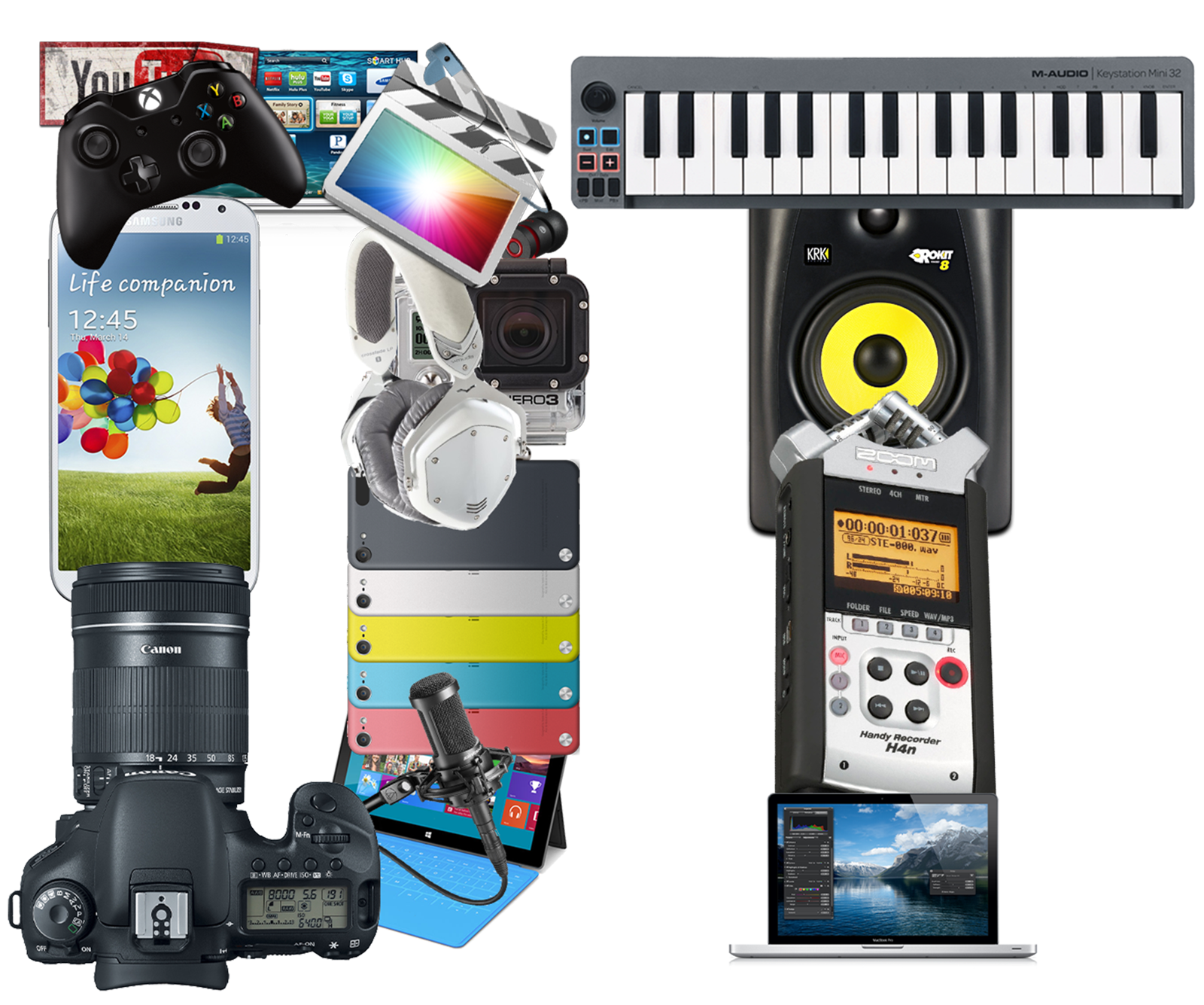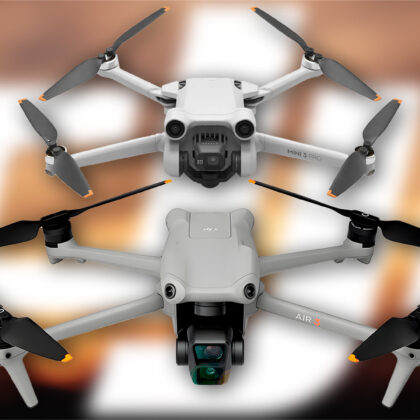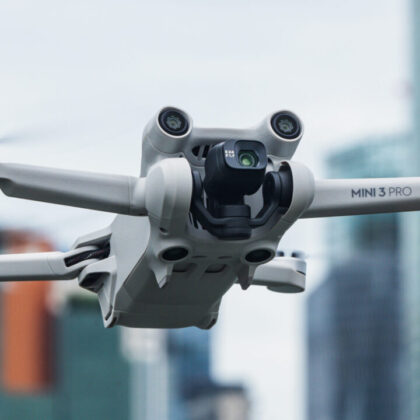DJI’s newest drone, the Air 3, features better flight time, a new OcuSync 4 transmission system, dual cameras, and more — but let’s take a look at its specs and features compared to the older Air 2S which it is replacing in a head-to-head Air 2S vs Air 3 spec showdown to see if newer is still always better.
A Brief History…
The Air 2S was released in April 2021 with much fanfare as people were blown away that DJI managed to fit that big of a sensor in such a small drone.
Though DJI didn’t say it, the Air 2S also basically replaced the aging Mavic 2 Pro, offering nearly identical specs in a smaller, less expensive package.
The results were pretty amazing and the Air 2S quickly became the go-to drone for around $1500 fully kitted out.
However, we always knew there would come a time when DJI would try to top it and release the next in its Air series — though I don’t think any of us thought it would look like this.
DJI Air 2S & DJI Air 3: Old vs New
Cameras – 1″/20mp vs 1/1.3″/12mp
In what is maybe the most controversial move, DJI made the rare move of actually reducing the sensor size from one generation to the next.

So far the reaction online has been mixed at best as most people have come to expect the newer drone, GoPro, smartphone, etc to always have a bigger sensor in the latest generation (or at least not smaller).
However, by going with a smaller sensor (the same as the Mini 3 Pro FYI so certainly a very capable setup), DJI was able to fit a whole extra camera on the Air 3.
Along with the 3X camera, the Air 3 also offers faster video frame rates with 4K/100fps though loses the 5.4K option which the Air 2S offered due to the smaller 12mp sensor.
| DJI Air 2S | DJI Air 3 | |
| Main Camera | 20mp | 12mp (*48mp) |
| Sensor | 1″ Sony IMX383 | 1/1.3″ Omnivision OV48C |
| Lens | 22mm | 24mm |
| Aperture | f/2.8 | f/1.7 |
| Second Camera | – | Same sensor & specs |
| Lens | – | 72mm (3X) |
| Aperture | – | f/2.8 |
| Max Video Resolution | 5.4K | 4K |
| Max Video Frame Rate | 4K/60fps | 4K/100fps |
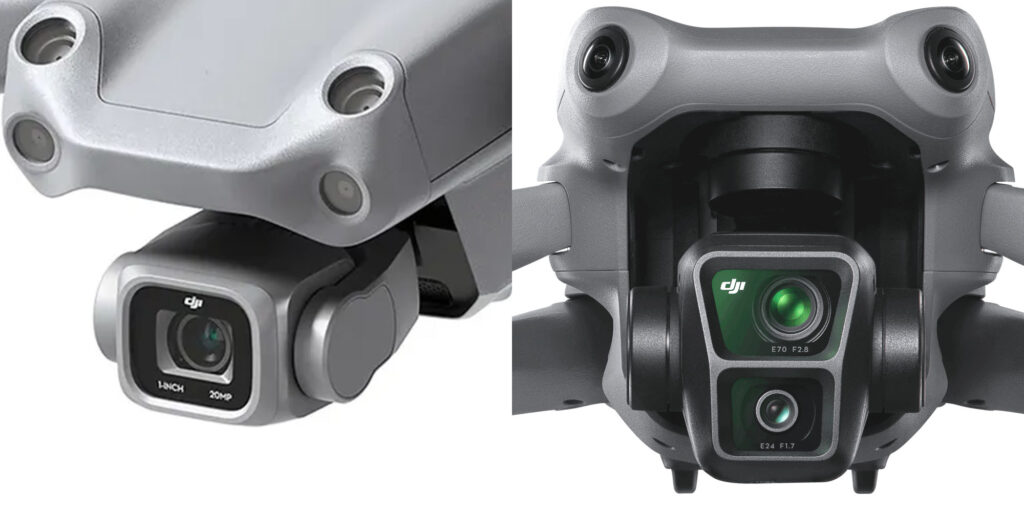
Both the Air 2S and Air 3 are able to record in D-Log M as well as HLG and both have a max bitrate of 150mbps.
Winner? Tie
Battery Life – 31min vs 46min
This one is an easy win for the Air 3 even without considering the new fast-charging features DJI has introduced with the Air 3.
The Air 2S offers a respectable 31min battery life (real world ~24min) but with it being introduced 2+ years ago, battery and ESC tech has come a long way.
With the Air 3, DJI not only increased the capacity of the battery from 3750mAh to 4241mAh — they also updated the whole battery design to the same look as the Mavic 3 where the battery slides into the rear of the drone rather than clipping into a tray on top.
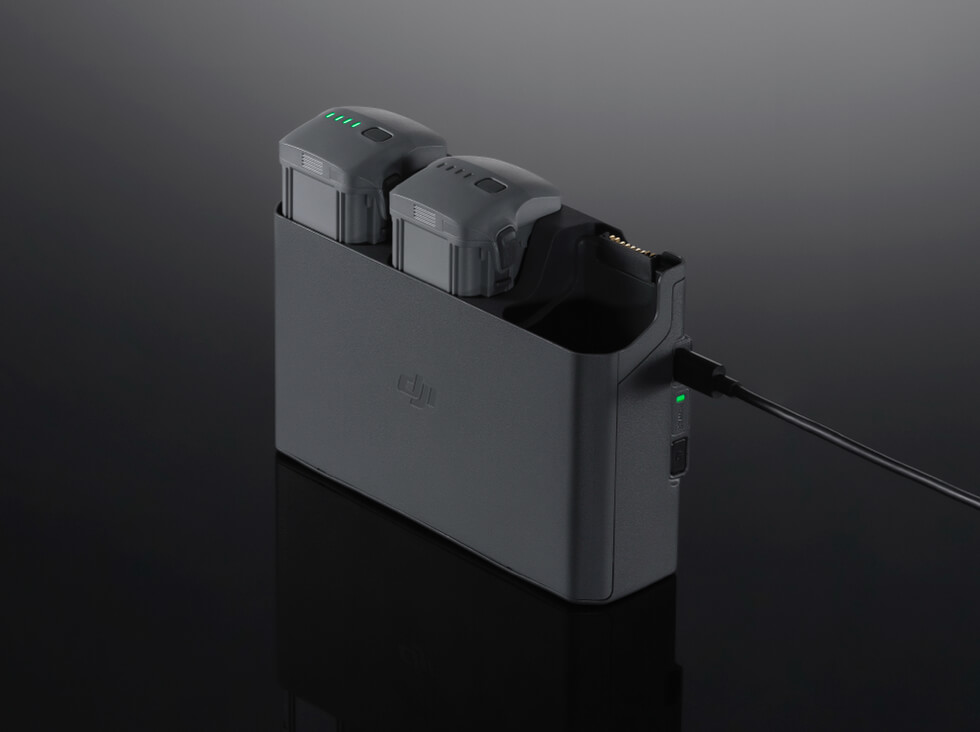
Given that the weight of the Air 3 is also over 100g heavier than the Air 2S it’s impressive that they still were able to increase the flight time to 46min (real world ~33min).
| DJI Air 2S | DJI Air 3 | |
| Advertised Flight Time | 31min | 46min |
| Real World Flight Time | 24min | 33min |
| Battery Size | 3750mAh | 4241mAh |
| Max Charging Voltage | 12.6V | 17V |
| Weight | 198g | 267g |
| Battery Type | LiPo 3S | Li-ion 4S |
As you can see from the max charging voltage, the Air 3 Li-ion battery can charge at almost twice the rate as the Air 2S batteries.
This translates to it being able to charge in up to 60min when paired with a 100W USB wall adapter.
On top of this, the new battery charging hub that DJI has designed for the Air 3 can charge all three batteries at once — a first for DJI — and can also transfer the remaining voltage to the battery with the most so it can be used in situations when access to power is limited.
Winner? Air 3
Controller & Image Transmission – OcuSync 3.0 vs OcuSync 4.0

Arguably one of the biggest upgrades DJI made with the Air 3 is the introduction of OcuSync 4.0.
The new image transmission protocol offers better range and more reliable connection than previous OcuSync generations.
And sure, no one technically (or legally) needs 20km of range, but the fact that DJI can claim that its new system has nearly 50% more range than the previous generation means that even in the most congested wireless environments you’ll be able to maintain a connection with your drone.
| DJI Air 2S | DJI Air 3 | |
| Transmission System | OcuSync 3.0 | OcuSync 4.0 |
| Range (FCC & CE) | 12km/8km | 20km/10km |
| Live View Quality | 1080p/30fps | 1080p/60fps |
| Download Speed | 5.5MB/s | 10MB/ps |
Along with the new transmission system comes new controllers as well — aptly named the DJI RC2 and RC-N2.
These are nearly identical to the old controllers but add OcuSync 4.0 and more antennas for better range while sacrificing some battery life.
| RC-N1 | RC-N2 | DJI-RC | DJI-RC2 | |
| Battery Life | 4 hours | 3.5 hours | 4 hours | 3 hours |
| Antennas | 2 antennas (1TX/1RX) | 4 antennas (2TX/2RX) | 2 antennas (1TX/1RX) | 4 antennas (2TX/2RX) |
| Memory | — | — | 8GB | 32GB |
On the spec page DJI also now lists out the expected range for O4 in different situations such as “Low Interference and Obstructed by Buildings” which shows that users can expect approx. 0-0.5 km range.
Though this seems really low, it is actually about on par with what I have experienced while flying my Mini 3 Pro or Mavic 3 in cities sometimes with the O3 transmission system.
Goes to show that even the best transmission system doesn’t stand a chance in a noisy RF environment with physical impediments.
Winner? Air 3
Portability – 595g vs 720g
Except for the word “Air” in the name, there is little left to remind you that this series was once DJI’s smallest drone.
And with the Air 3 the gap between the Mini series and Air series widens even more.
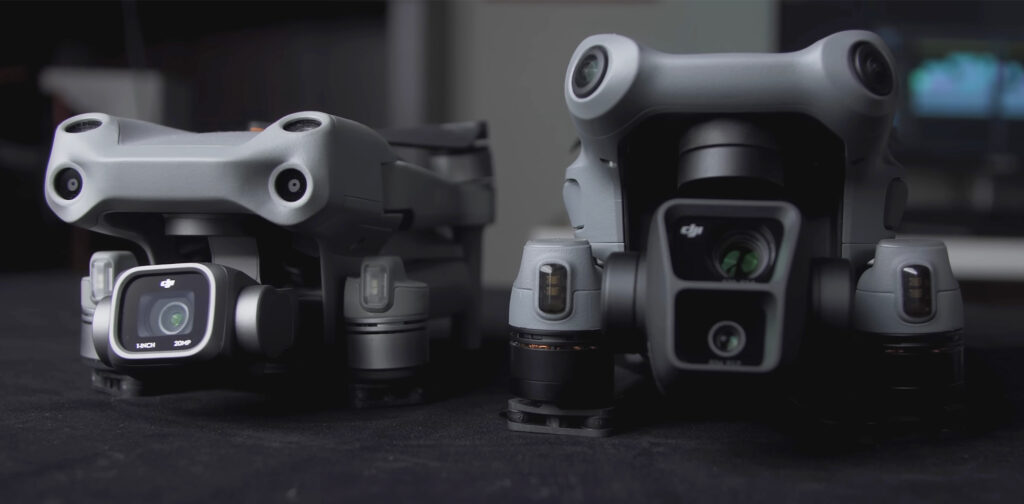
DJI already increased the size between the first Mavic Air to Air 2/2S from 430g to 595g but jumps up another 125g with the Air 3.
Over half of the weight gain comes from the larger battery.
However, the Air 3 is also significantly bigger than the Air 2S, especially when unfolded.
| DJI Air 2S | DJI Air 3 | |
| Weight | 595g (21oz) | 720g (25.4oz) |
| Folded (L × W × H) | 180 × 97 × 77mm | 207 × 100.5 × 91.1mm |
| Unfolded (L × W × H) | 183 × 253 × 77mm | 258.8 × 326 × 105.8mm |
Add in 2 extra batteries, and carrying the Air 3 with you will add almost 265g (9.3oz) of more weight to your backpack than the Air 2S.
Winner? Air 2S
Smart Features – ActiveTrack 4.0/3-Way Avoidance vs ActiveTrack 5.0/360° Sensing
If you can count on DJI to update anything between generations, it’s the smart features.
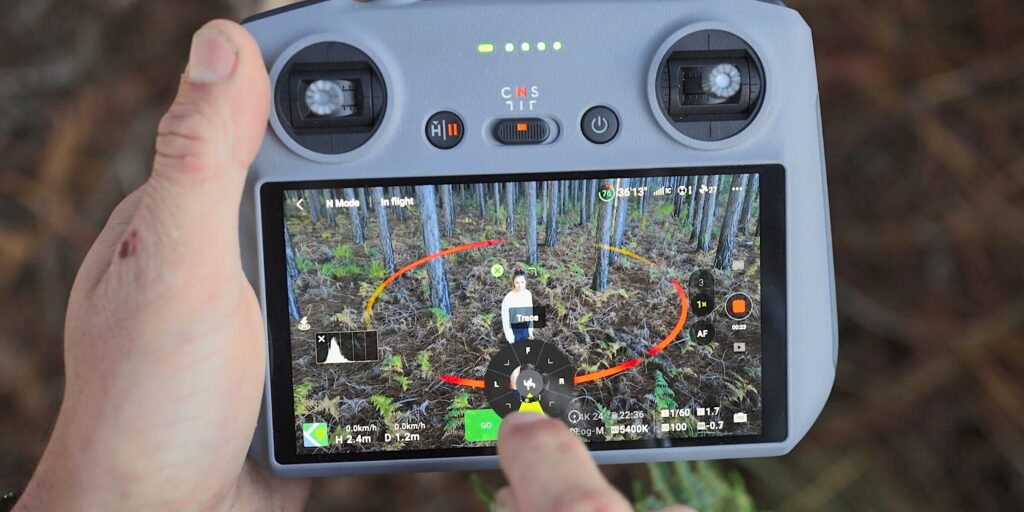
This includes obstacle avoidance, tracking, POI, and more.
Right off the bat the Air 3 offers improved obstacle avoidance over the Air 2S with DJI calling it “omnidirectional” and using marketing images that allude to it being full 360° sensing like the Mavic 3 series.
I personally still don’t trust any of DJI’s obstacle avoidance tech as I’ve seen far too many people crash without it doing anything, but it is good to see them at least trying to improve the technology.
The Air 3 gets the latest proprietary flight software with APAS 5.0 and ActiveTrack 5.0.
Spotlight 2.0 and Point of Interest 3.0 as well as smart flight modes like QuickShots, MasterShots, and more are all carried over from the Air 2S.
| DJI Air 2S | DJI Air 3 | |
| Obstacle Sensing | Forward/Back/Up/Down | Forward/Back/Lateral/Up/Down |
| Follow Mode | ActiveTrack 4.0 | ActiveTrack 5.0 |
| Obstacle Avoidance | APAS 4.0 | APAS 5.0 |
| Spotlight | 2.0 | 2.0 |
| Point of Interest | 3.0 | 3.0 |
| MasterShots & Quickshot | Yes | Yes |
| LightCut App | – | Yes |
Interestingly, DJI has also introduced a whole new editing app with the Air 3.
Called LightCut it utilizes a process similar to what we’ve seen with Insta360 where you can connect your smartphone to your device, edit the clips you want, and then share the edited video/photo all without ever downloading the original footage to your smartphone.
Winner? Air 3
Price – $999 $799 vs $1099
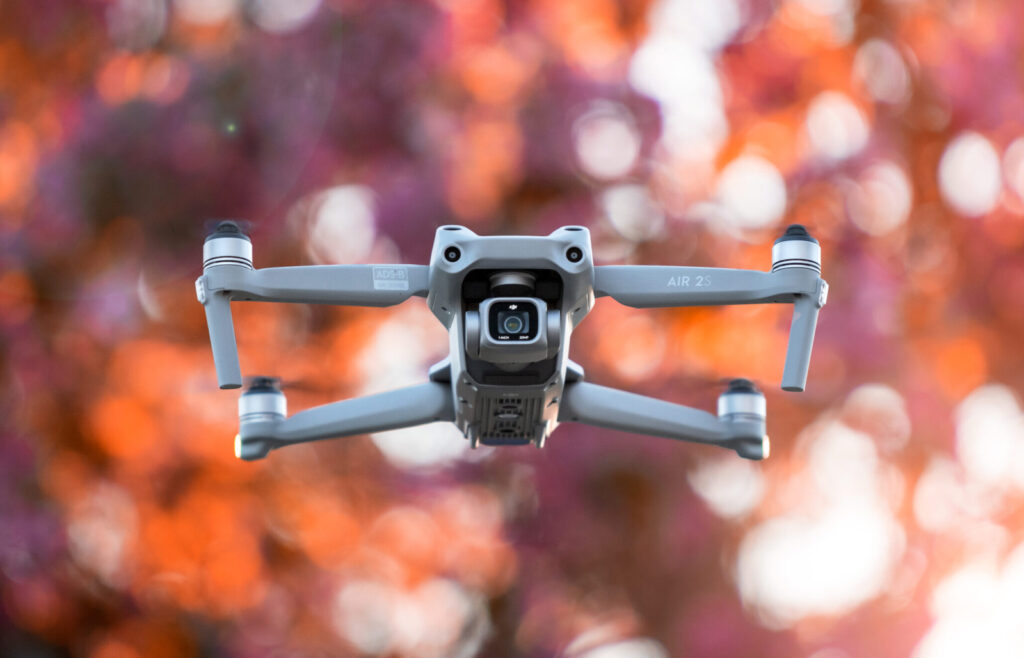
The Air 2S originally came in at just under $1000 but has since seen a $200 price cut.
At $1099, the Air 3 is $100 more than the Air 2S’s original price.
Looking at the fly more combos with the RC-N1 or N2 controller, it is:
- DJI Air 2S –
$1299$1039 - DJI Air 3 – $1349
Getting the DJI RC2 controller with the Air 3 will set you back an additional $200.
Winner? Air 2S
Verdict: Air 3 is better (duh) but Air 2S ain’t dead yet
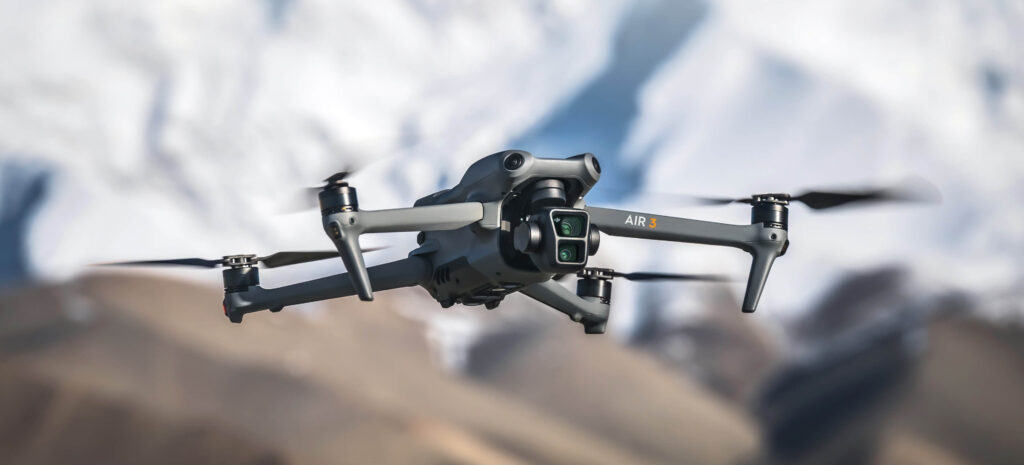
So anytime I write up one of these comparisons the obvious conclusion is generally that the newer product is better.
That’s just the way technology innovation works.
With the Air 2S vs the Air 3, it is no different as the Air 3 is clearly the superior drone in all situations with the Air 2S still maintaining a slight advantage for photography and portability.
However, this isn’t to say that all Air 2S owners should immediately throw their drone into the nearest trash can and run to their closest BestBuy — as I would advise many Air 2S owners to wait to see what the future holds.
Judging from DJI’s history with the Air series (Air 2 in June 2020 followed by the Air 2S in April 2021) and Mavic 3 (Mavic 3 in November 2021 then Mavic 3 Pro in April 2023), I think there is a very good chance we may see an Air 3S or Air 3 Pro come Q3-Q4 of 2024.
What a possible Air 3S or Air 3 Pro may hold is purely speculation at this point, but it is possible that DJI revisits the IMX383 1″ sensor we saw with the Air 2S or even debuts it with a new 1″ sensor from Sony.
But, if you’re in the market for a new drone now and aren’t looking for one only for photography, then the Air 3 is a great choice.
If you’re also looking at the Mini 3 Pro vs the Air 3 I have a previous article on that.
Otherwise thanks for reading and hope this was helpful.
Feel free to tweet at me on Twitter or DM me on Instagram if you have any questions or corrections about the specs/features.
And as always, subscribe to Digital Tech Reviews & Tips on YouTube for my latest tech videos.
